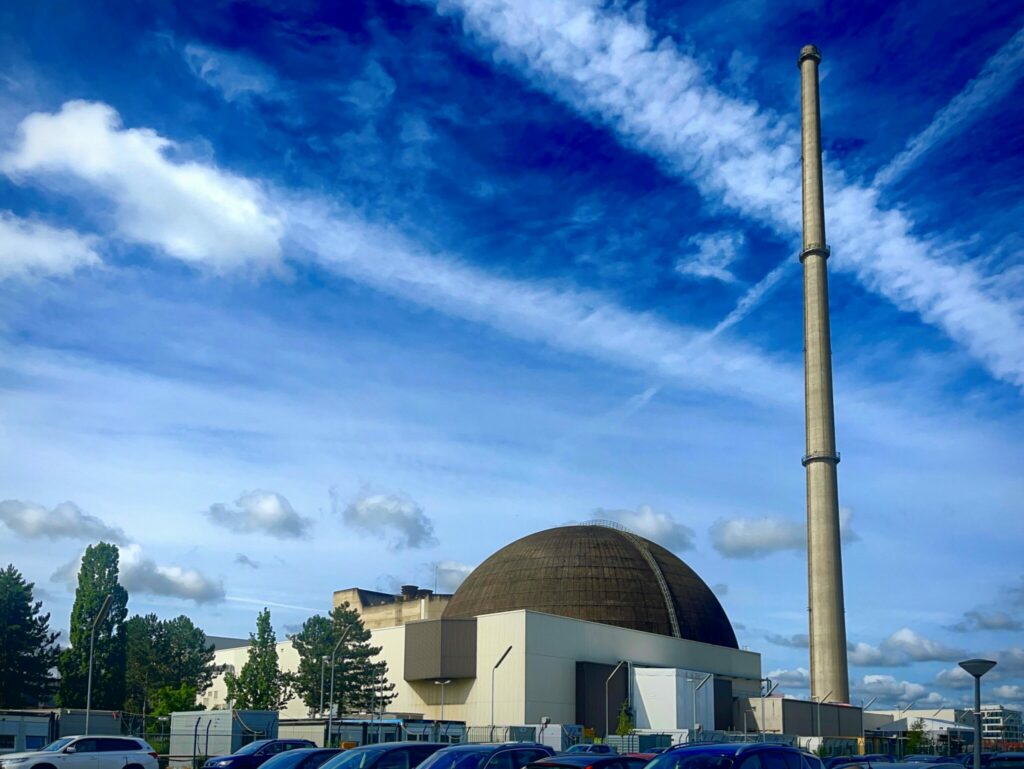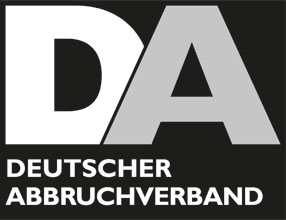
Pure effort – dismantling a power plant

The Mülheim-Kärlich nuclear power plant near Koblenz was one of the first nuclear power plants in Germany to be taken off the grid. In 1988 – just 100 days after its first operation – it was shut down again due to a faulty building permit procedure and finally decommissioned in 2001. In 2017/2018, the actual demolition work began, which was carried out by DA member companies Landwehr and Moß. In the course of this, infrastructure buildings were first demolished, and then in 2019 the DA member company MB-Spezialabbruch demolished the cooling tower.
Since then, the company AWR-Abbruch GmbH continued to clean up the site on behalf of AGM GmbH. The work began with the screening of the earth wall that surrounded the cooling tower. The material was sieved into the following fractions: topsoil, pumice and stones, which were crushed again. The mass of the earth wall amounted to approx. 50,000 m³, of which approx. 35,000 m³ is topsoil, which in turn will be used on the site to backfill the perimeter areas. In addition, the material is used to cover the foundations of the noise barriers on the NIG Wohnpark Weißenthurm GmbH project, and the remains are sold to third parties. This work was carried out between April and December 2020.
Parallel to the work listed above, AGM GmbH developed the site as a commercial and industrial area and obtained permission to develop the industrial area into a technical structure. The cellars, the accessible tunnel system, concrete pipes, media ducts, steel pipes up to a diameter of DN 2200 mm to a depth of eight to ten metres were still slumbering in the ground itself. All this and the reinforced concrete fences that had enclosed the former nuclear power plant site, as well as the railway tracks, were then dismantled by the company AWR Abbruch GmbH in 2021 and 2022.
Subsequently, the company ReCon Baumanagement GmbH & Co. KG, together with AGM GmbH, took care of the preparation of the development plans and the planning of a technical building on the site, which covers a total of 13 ha.
The work on the technical structure has not yet been completed. For this purpose, material of the classification class Z0/Z0* was used up to 66 m above sea level, from 66.00 – 67.75 m above sea level a material of the classification class Z2 was used, and from 67.75 m above sea level a protective layer/cover layer is applied to the Z2. The processed area amounts to approx. 92,000 m³, on which Z2 will be applied, plus a green area with Z0 topsoil on an area of approx. 20,000 m³ at the edges. In total, approx. 160,000 m³ of Z2 and approx. 17,500 m³ of Z0 topsoil will be placed in the marginal areas. In the lower area (below 66 m above sea level), approx. 40,000 m³ of Z0/Z0* will be introduced. The soil will be stabilised by calking, milling and compacting, and the compressive strength will be continuously checked by dynamic and static load plate pressure tests. All this under time pressure: because the work was started in June 2022 and the handover is scheduled for November 2023. This work is being carried out by RBS GmbH.
Special challenges arise from the immediate vicinity of the nuclear power plant (reactor, chimney, halls, office building), which is still under nuclear law. Furthermore, the train line (ICE, IC etc. Koblenz-Köln) passes the area, so that dust pollution must be reduced to a minimum.
The following construction machines and equipment will be used for the work: Hitachi 870, CAT 390, LH 956, ZX 300, CAT 330, ZX 210, CAT 966, Hyundai HL 975, CAT D6, CS74B, CS66B, Wirtgen mounted trencher WS250, tractors and grammers, AMAG lime spreader, a mobile scale from Wöhrl and a tyre washing system from Geowell. The equipment is rented from CR Construction Rental GmbH. In addition, a crusher from Kleemann and a screening plant from Reiner, the EVO 110, are used. On average, 4 to 8 people work on the site every day. Nature conservation was also taken into account: An ornithologist was consulted before the trees were cleared; lizards that had already made their home on the disused power plant site were relocated.
After completion of the work, a business centre of the AGM company and a hotel are to be built on the industrial area, and Motor-One GmbH wants to build conference rooms and a classic car and sports car exhibition there. The area of the industrial estate is being sold.
ReCon Baumanagement GmbH and the engineering office Faßbender und Weber also took care of the deconstruction permit for the former discharge structure on the Rhine. First, the existing structure had to be explored, for which the company UGB from Weiterstadt was called in.
The main difficulty in the dismantling of the discharge structure is that a part of the structure is integrated into the Rhine and thus has to be demolished under water. In order to ensure that no suspended and turbid mater as well as mineral building materials get into the Rhine and impair the water quality during mechanical demolition under water, sheet piles have to be placed up to a depth of approx. 13 m on land and in the Rhine by the company Jansen Grundbau GmbH. However, this can only be done after the explosive ordnance has been cleared.
This will create an area of approx. 650 m³ on which the new discharge structure is to be built. For the new discharge system, one of the two existing cooling water pipes will be separated from the technical structure. One pipe has already been filled with liquid soil over a length of 10-12 m (below the cycle path parallel to the Rhine). The other pipe will later be used as an emergency overflow in case the infiltration basin of the industrial area is not sufficient during heavy rainfall. In order not to have to tie back the shoring, it was chosen in such a way that the water level inside the sheet pile box and outside (in the Rhine) must always be the same. Removal is carried out by means of an excavator and hydraulic chisel. Approx. 900 to 1,200 m³ of concrete must be partially removed underwater using an underwater kit on the chisel (ZX 490 carrier).
Following the deconstruction, the site will be backfilled with gravel and natural material (grain size 0/45). The second DN 2200 pipe is reduced to DN 800 mm and serves as an emergency overflow for the existing seepage basin from the former power plant site. The reinforced concrete pipe is specially designed for use in the Rhine floodplain (water). Parallel to the backfilling at ground level (top edge of the terrain), the Rhine embankment is paved with natural stones, as it is not permited to work with concrete.
This work, in which the companies Jansen Grundbau GmbH, AWR Abbruch GmbH and RBS GmbH are involved, must be completed by November 2023.
Photos: DA
Information
ReCon Baumanagement GmbH & Co. KG
Thilo Weigele
Am guten Mann 1
56218 Mülheim-Kärlich
Tel.: 02630 99997 0
Fax: 02630 99997 99
info@recon-baumanagement.de
www.recon-baumanagement.de





